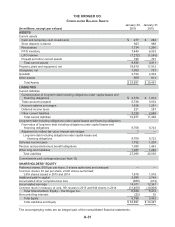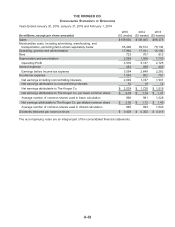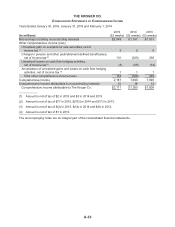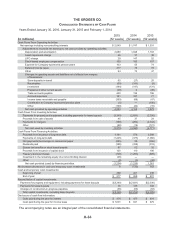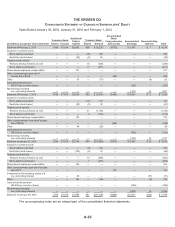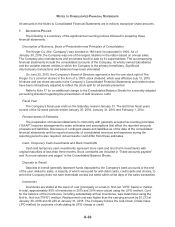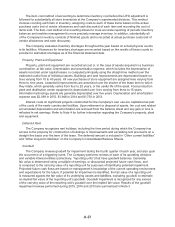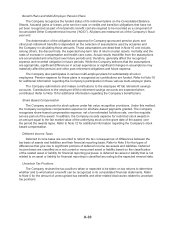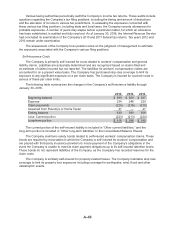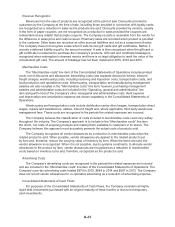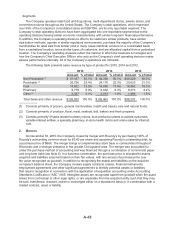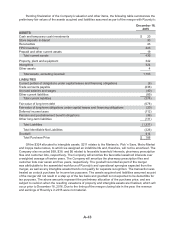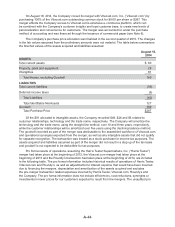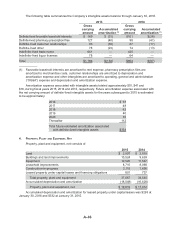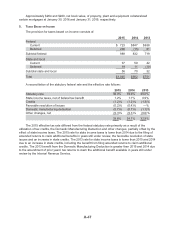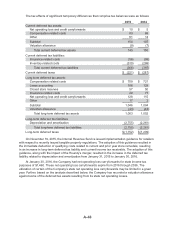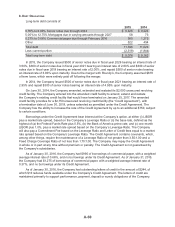Kroger 2015 Annual Report Download - page 114
Download and view the complete annual report
Please find page 114 of the 2015 Kroger annual report below. You can navigate through the pages in the report by either clicking on the pages listed below, or by using the keyword search tool below to find specific information within the annual report.
A-40
Various taxing authorities periodically audit the Company’s income tax returns. These audits include
questions regarding the Company’s tax filing positions, including the timing and amount of deductions
and the allocation of income to various tax jurisdictions. In evaluating the exposures connected with
these various tax filing positions, including state and local taxes, the Company records allowances for
probable exposures. A number of years may elapse before a particular matter, for which an allowance
has been established, is audited and fully resolved. As of January 30, 2016, the Internal Revenue Service
had concluded its examination of the Company’s 2010 and 2011 federal tax returns. Tax years 2012 and
2013 remain under examination.
The assessment of the Company’s tax position relies on the judgment of management to estimate
the exposures associated with the Company’s various filing positions.
Self-Insurance Costs
The Company is primarily self-insured for costs related to workers’ compensation and general
liability claims. Liabilities are actuarially determined and are recognized based on claims filed and
an estimate of claims incurred but not reported. The liabilities for workers’ compensation claims are
accounted for on a present value basis. The Company has purchased stop-loss coverage to limit its
exposure to any significant exposure on a per claim basis. The Company is insured for covered costs in
excess of these per claim limits.
The following table summarizes the changes in the Company’s self-insurance liability through
January 30, 2016.
2015 2014 2013
Beginning balance $ 599 $ 569 $ 537
Expense 234 246 220
Claim payments (225) (216) (215)
Assumed from Roundy’s or Harris Teeter 31 — 27
Ending balance 639 599 569
Less: Current portion (223) (213) (224)
Long-term portion $ 416 $ 386 $ 345
The current portion of the self-insured liability is included in “Other current liabilities,” and the
long-term portion is included in “Other long-term liabilities” in the Consolidated Balance Sheets.
The Company maintains surety bonds related to self-insured workers’ compensation claims. These
bonds are required by most states in which the Company is self-insured for workers’ compensation and
are placed with third-party insurance providers to insure payment of the Company’s obligations in the
event the Company is unable to meet its claim payment obligations up to its self-insured retention levels.
These bonds do not represent liabilities of the Company, as the Company has recorded reserves for the
claim costs.
The Company is similarly self-insured for property-related losses. The Company maintains stop loss
coverage to limit its property loss exposures including coverage for earthquake, wind, flood and other
catastrophic events.



